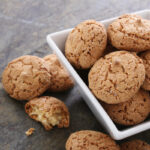
Crema Pasticcera: A Delectable Recipe Guide
For centuries, Pastry cream, also known as Crema Pasticcera, has held a significant place in Italian pastry making. Its origins can be traced back to Italy’s long-standing tradition of cherishing desserts and pastries.
The exact historical roots of Crema Pasticcera may be somewhat elusive, as custards and creams have been a part of culinary traditions for a long time. However, it is widely acknowledged that Italy played a crucial role in perfecting and popularizing this custard.
Italian pastry chefs and bakers are renowned for their culinary creations, and Crema Pasticcera has become an essential element in numerous traditional Italian desserts. With its smooth and silky texture, this cream serves as a delightful filling for various pastries, tarts, and cakes.
Typically made from ingredients such as milk, sugar, egg yolks, flour, or cornstarch, preparing Crema Pasticcera involves heating the milk before incorporating it into a mixture of beaten egg yolks, sugar, and thickening agents. The mixture is then heated again while being constantly stirred until it thickens into a custard.
One well-known application of Crema Pasticcera is in the renowned Italian dessert called “sfogliatella,” which is a flaky pastry shaped like a shell and filled with luscious custard. Additionally, it is commonly used as a filling for cannoli, cream puffs, and other delightful pastries.
Over time, the popularity of Crema Pasticcera has transcended Italy, and variations of this custard can now be found in many other cuisines around the world. Its versatility and delicious flavor have made it a favorite among pastry enthusiasts and home bakers alike.
In essence, the history of Crema Pasticcera is deeply intertwined with Italy’s rich and diverse culinary heritage, where a passion for fine food and desserts has been passed down through generations. Today, this classic custard continues to be a beloved ingredient, bringing joy to those who indulge in the sweet creations inspired by Italian pastry traditions.
- Serves: 1 People
- Prep Time: 15min
- Cooking: 15hr
- Difficulties: supereasy
Ingredients
For Cooking
- 4 Pcs Egg Yolks
- 1/2 Cup Granulated Sugar
- 1/3 Cup Cornstarch
- 2 Cups Milk
- 1 Pcs Zest of 1 Lemon
- 3 Tsp Vanilla extract (or 1 Vanilla Pod)
For Dressing
Nutritional Information
Procedure
- Chill a bowl in the freezer before starting the preparation to ensure it is adequately cold when you transfer the freshly made cream.
- Opt for cornstarch or rice starch, but avoid using flour.
- Stir the cream briskly for a few minutes, both when it’s hot (to rapidly lower the temperature) and, notably, when it’s cold to reinstate its creamy texture.
-
1Mark As Complete
Begin by placing a glass bowl in the freezer. This step is crucial for quickly cooling the cream and giving it a glossy finish.
-
2Mark As Complete
In a small saucepan, combine 4 egg yolks and sugar. Whisk the mixture without whipping. Add cornstarch and mix thoroughly to prevent any lumps from forming.
-
3Mark As Complete
In a separate saucepan, heat milk along with lemon zest and vanilla extract (or a vanilla pod). Bring it close to a boil to infuse the milk with flavor. Remove the milk veil and lemon zest (or vanilla pod) afterward.
-
4Mark As Complete
Now, gradually pour the heated milk into the egg mixture prepared earlier, stirring vigorously with a whisk in two stages. Place the saucepan back on the stove to thicken the cream while continuing to stir. Remove the saucepan from the heat once thickened.
-
5Mark As Complete
Pour the cream into the pre-chilled glass bowl. Stir extensively to rapidly lower the temperature.
-
6Mark As Complete
Once the cream is smooth and free of lumps, cover the glass bowl with “contact” plastic wrap and allow it to rest in the refrigerator for a few hours.
-
7Mark As Complete
After the refrigeration period, the cream will initially be quite firm. Whip it thoroughly to restore its smooth and velvety texture.
-
8Mark As Complete
Your custard is now ready for use!
Marcella Capon
Marcella Capon, a passionate Italian food blogger, brings the flavors of Italy to life through her blog. With a rich culinary heritage and a knack for creative recipes, she transports her readers to the heart of Italian cuisine. Marcella's delectable dishes and engaging storytelling have made her a trusted source for authentic Italian recipes and culinary inspiration worldwide. Follow her for a taste of Italy's culinary magic.
You also might like
No recipe were found.


